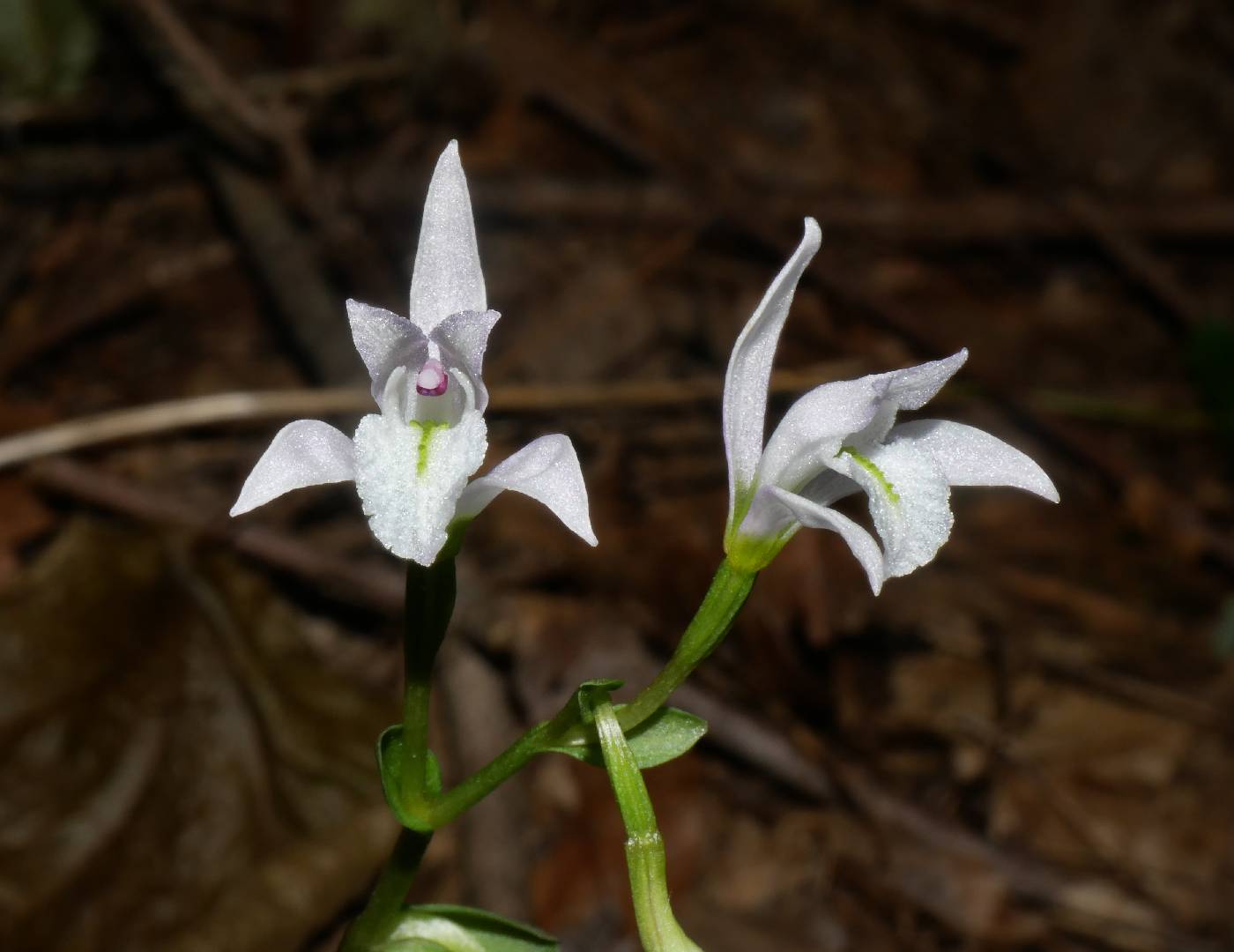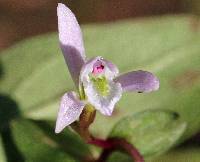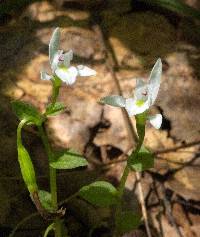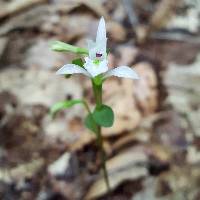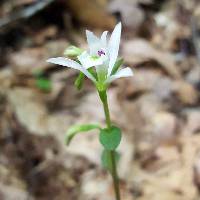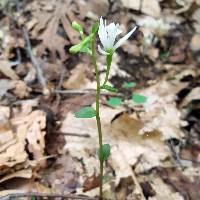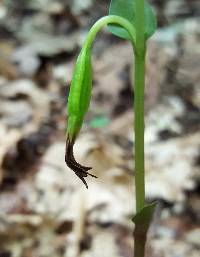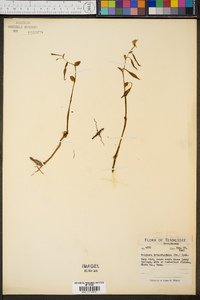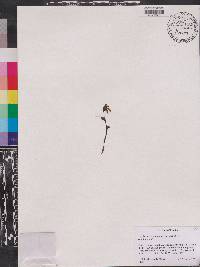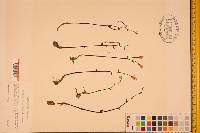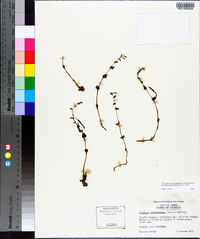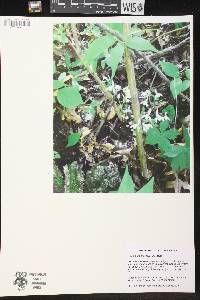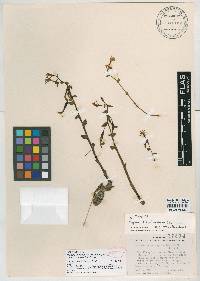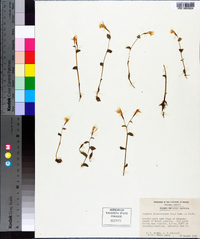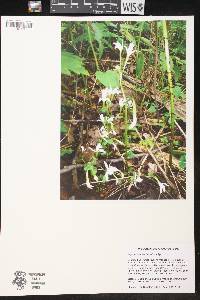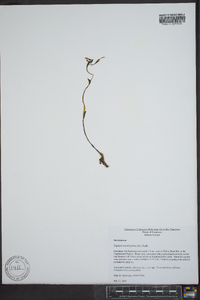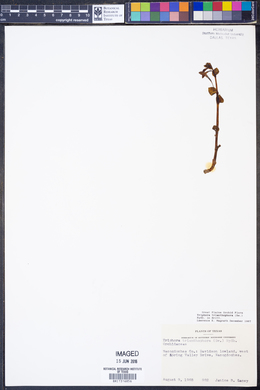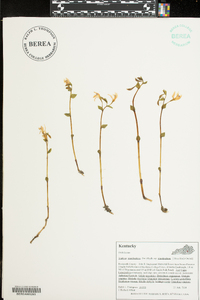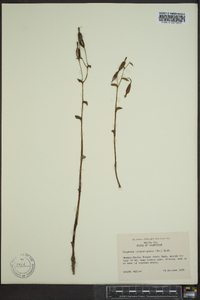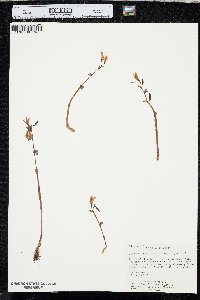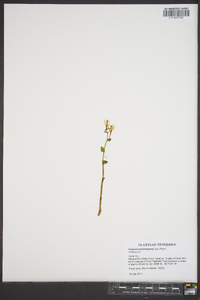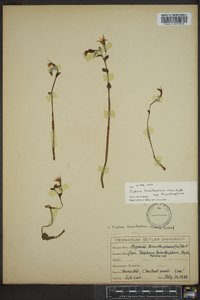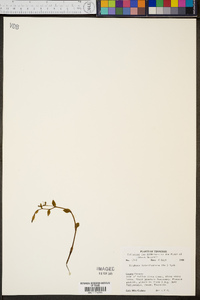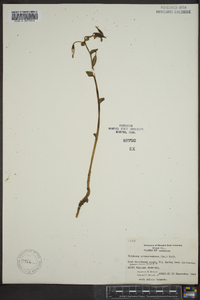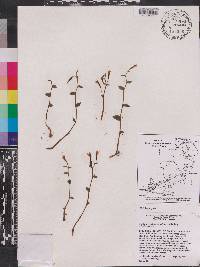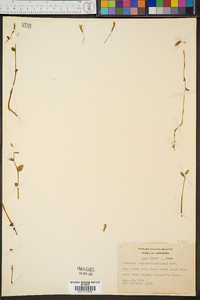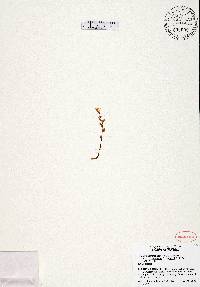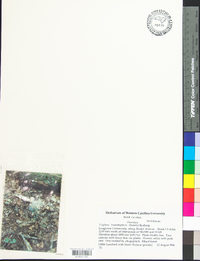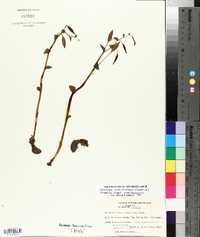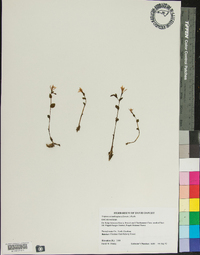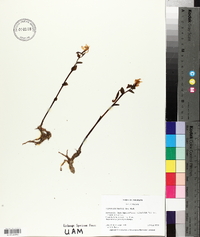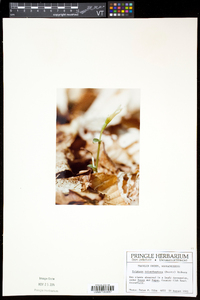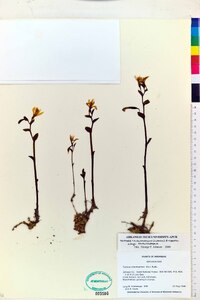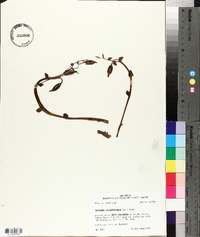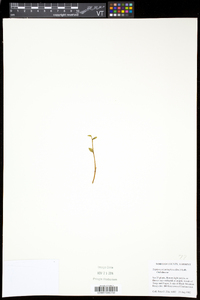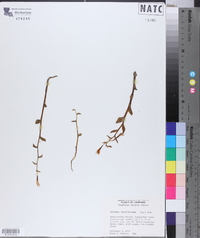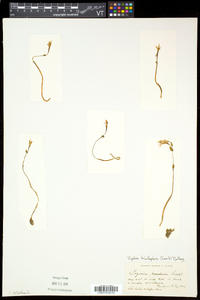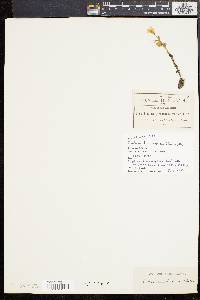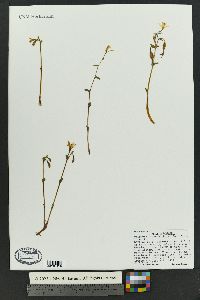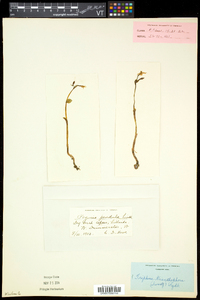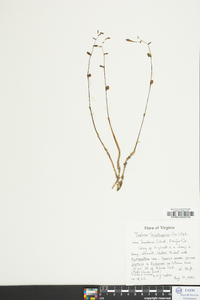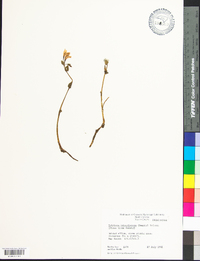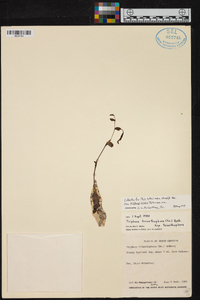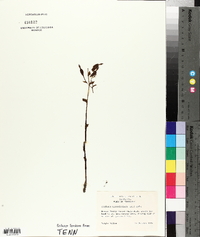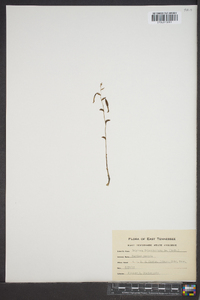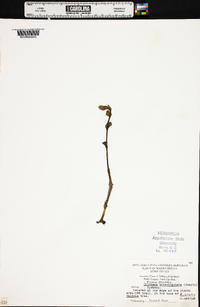Triphora trianthophora
|
|
|
|
Family: Orchidaceae
Threebirds
[Pogonia trianthophora, moreTriphora trianthophora var. schaffneri Camp] |
Perennial semi-mycotrophic (saprophytic) herb 10 - 20 cm tall Leaves: three to six, stalkless, clasping, 0.8 - 1.5 cm long, 0.5 - 1 cm wide, egg-shaped, and non-toothed. The upper leaf surface is green, but the lower side often has a purple coloring at least along the veins. Inflorescence: a single, erect, terminal, fairly short, loose arrangement of typically three (rarely one to six) stalked flowers with each flower subtended by a 0.6 - 1 cm long, 3 - 6 mm wide, egg-shaped, leaf-like bract. The conspicuous flower buds droop or nod, but once mature, the flowers become erect. Flowers remain open only one day, and only one flower on each plant opens at a time. The timing of flower opening in a population is very synchronized such that all plants open one flower at the same time, and then wait up to a week before the next round of buds open. Flowers: pale pink to whitish, small (under 5 cm diameter), bilaterally symmetric with one petal formed into a lip, but lacking a spur. The reproductive parts of stamens, stigma and style are fused into a white, 1 cm long, 2 mm wide, slender club-shaped column above the inferior ovary. Pollen in discreet magenta masses (pollinia). Sepals: three, spreading (one upward, two outward), petal-like, white to pinkish purple, 1 - 1.5 cm long, 3 - 5 mm wide, oblong to lance-shaped with fairly pointed tips. The erect upper sepal curves forward beyond its middle, while the spreading lateral sepals curve outward towards reflexed tips. Petals: three, lip slightly down-curved, upper two close together and pointing forward and curved over column. The lateral petals are solid whitish to pale pink-purple, 1.1 - 1.5 cm long, 3 - 5 mm wide, elliptic to spoon-shaped, and tapered to somewhat curved tips. Lip 1 - 2 cm long, 6 - 8 mm wide, inversely egg-shaped in outline but three-lobed with two lower, smaller, egg-shaped, lateral lobes curved upward and hidden under lateral petals. The central lobe of the lip petal is nearly circular, wavy-toothed at the edges, and white to pinkish purple with three, bright green, bumpy, interrupted ridges running lengthwise down the center. Fruit: several, initially nodding (erect at maturity), 1 - 1.5 cm long, 0.5 -1 cm wide, ellipsoid, stalked capsules (stalk about same length as capsule) with three raised lengthwise ridges, and a beak at apex. Flowering stem: single, erect, somewhat zigzag, fleshy, hairless, purplish green with several small leaves, and ending in a loose inflorescence. Root system: with slender true roots, and horizontal rhizome-like structures (stolons) forming whitish, 1 - 3 cm long, 0.5 - 1.5 cm wide, globular tubers from which new plants arise. The tubers emit a rich vanilla-like fragrance. Similar species: Triphora trianthophora is most similar to Pogonia ophioglossoides, but that species has only a single stem leaf, only one flower at the apex of the stem, the flower is deeper pink to magenta, the sepals and lateral petals are straight (non-curved), and there is only a single erect capsule, which is lacking a beak. Flowering: early August to September Habitat and ecology: Extremely rare, in wooded sand dunes, rich mesic beech-maple woodlands, or mixed deciduous forests. Often in pockets of deep humus, or areas with considerable leaf litter, however high amounts of organic matter are apparently not critical (see Homoya 1993). Occurence in the Chicago region: native Notes: Triphora is found only in the New World, and only T. trianthophora extends north beyond the subtropical climate of southern Florida. Since the distribution of this species is more south-central and southeastern, it is not surprising how rare it is in the Chicago Region. Since T. trianthophora derives most of its nourishment from dead organic matter with the aid of a fungus (mycotrophic), the photosynthetic plant parts only emerge when conditions are favorable for reproduction. Most of the time the plant remains out of sight below ground. Due to this periodic dormancy from flowering, often a large group of plants may be seen one year, but the next year may only have a few or even no flowering individuals. Another interesting phenomenon associated with flowering of T. trianthophora populations is that the synchronization of bud opening is thought to be dependent upon several environmental factors such as drops in evening temperature or changes in length of daylight, but not precipitation (Homoya 1993). This synchronized pattern of blooming provides for instances when all individuals in a population may have open flowers, then other times when all are only in bud, and also times when none have open flowers. Etymology: Triphora comes from the Greek words tri, meaning three, and phoros, meaning bearing, in reference to either the typical three flowers per plant, or the three ridges or crests on the flower lip. Trianthophora translates as "bearing three flowers" referring to the common number of flowers per plant. Author: The Field Museum Stem 1-3 dm, nodding, straightening as it grows; lvs sessile, ovate, 1-2 cm; fls ephemeral; sep and lateral pet lanceolate, 1.5-2 cm; lip 1.5-2 cm, with 3 prominent green ridges, crisped at the tip, the lateral lobes upturned. Rich moist woods, often on rotten logs; s. Me. to s. Wis., s. to Fla., Tex., and C. Amer. Aug., Sept. (Pogonia t.) Gleason, Henry A. & Cronquist, Arthur J. 1991. Manual of vascular plants of northeastern United States and adjacent Canada. lxxv + 910 pp. ©The New York Botanical Garden. All rights reserved. Used by permission. From Flora of Indiana (1940) by Charles C. Deam Indiana Coefficient of Conservatism: C = Wetland Indicator Status: |
|
|
|

